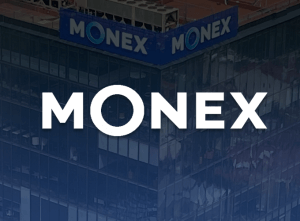VIX1D Index: Cboe launches 1-Day Volatility Index to measure single trading day volatility
“We believe the VIX1D Index will be a useful tool for the growing group of investors utilizing same-day options trading strategies to better understand the daily market dynamics.”

Cboe Global Markets has launched the Cboe 1-Day Volatility Index (VIX1D) which aims to measure the expected volatility of the S&P 500 Index over the current trading day.
Similar to the Cboe Volatility Index (VIX Index), the VIX1D Index estimates expected volatility by aggregating the weighted prices of P.M.-settled SPX (SPXW) options with one- to zero- day expirations over a wide range of strike prices. Specifically, the prices used to calculate VIX1D Index values are midpoints of real-time, SPXW option bid/ask price quotations.
By launching a product that measures single trading day volatility, the leading derivatives and securities exchange network, further enhances market participants’ understanding of current equity market volatility. The VIX1D Index was developed by Cboe Labs, the company’s in-house innovation hub.
A useful tool for investors utilizing same-day options trading strategies
Ed Tilly, Chairman of the Board and CEO of Cboe Global Markets, said: “For decades, market participants looking to understand, measure and manage volatility have turned to Cboe. We are committed to continuing to innovate in the volatility space and we believe the VIX1D Index will be a complementary addition for market participants seeking to better understand current equity market volatility or as they employ different trading strategies. The development of the VIX1D Index is another example of the strength of Cboe and S&P Dow Jones Indices’ long-standing relationship, highlighting the companies’ shared commitment to drive innovation through rigorous data analysis and market solutions.”
Rob Hocking, Senior Vice President and Head of Product Innovation at Cboe, said: “Cboe revolutionized investing with the creation of the VIX Index in 1993 and has been at the forefront of the volatility space ever since. As such, when we saw a market need to develop a shorter-term measurement of expected volatility, we embodied that same pioneering spirit to design the VIX1D Index. We believe the VIX1D Index will be a useful tool for the growing group of investors utilizing same-day options trading strategies to better understand the daily market dynamics.”
The VIX1D Index was launched 30 years after the original Cboe Volatility Index (VIX Index), which debuted in April 1993, which has grown into a VIX Index suite that includes the 30-day VIX Index, VIX 1-year, VIX 6-month, VIX 3-month, and VIX 9-day Indices.
VIX1D Index more volatile than indices measuring longer time horizons
The new, non-tradable 1-day volatility index is designed to provide real-time information about the expected volatility of the current trading day. It accounts for the compressed measurement of expected volatility over a single day and differs from the VIX Index in ways to account for this.
By its nature, the VIX1D Index is expected to generally behave in a more volatile manner than indices that measure a longer time horizon of expected volatility. This is because news events that affect the S&P 500 Index on a given day are expected to have a larger impact in short-dated SPX options than in longer dated options when market participants have more time to react to the news event.
For example, amid the recent collapse of two U.S. banks between March 8, 2023, and March 13, 2023, the VIX Index rose from 19.11 to 26.52 (38.8%) while the backtested VIX1D Index rose from 15.30 to 40.19 (162.7%) over this period. On days of heightened volatility, the VIX1D Index is expected to reflect short-term impacts, whereas by its design, the VIX Index is expected to continue to reflect expected volatility 30 days out.









